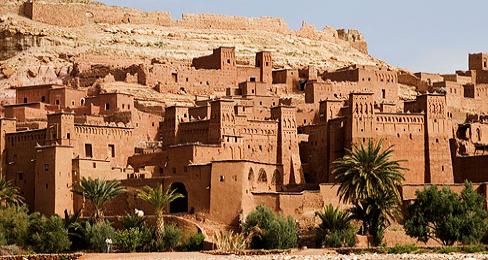The Business Lunch: Morocco’s Most Popular Dishes and Business Etiquette
Morocco, one of North Africa’s most fascinating countries, borders on Spain and Algeria. Being just a quick boat-ride away from Europe, Morocco is accustomed to foreign visitors and therefore more tolerant to western culture than other countries in the region. However, if you find yourself traveling to Morocco on a business trip, there are still a lot of customs and rules of etiquette that it’s important to adhere to. Meals are especially important as social rituals, and if you find yourself scheduled into a business lunch, you can be sure that’s when your Moroccan colleagues will be sizing you up as a potential business partner.
While you may be taken to a more western-styled restaurant for lunch, traditional Moroccan meals take place on a mat on the floor. You and the other diners will then share food from a large, communal bowl. Meals are eaten by hand, and you will have an opportunity to wash your hands in a basin before dining – but be careful to only take food with your right hand, as the left is considered unclean in Islamic culture. As you eat, don’t clean your hand on your napkin – the washing basin will be brought around afterwards – and especially don’t put your fingers in your mouth at any point, as that hand will be touching shared food for the rest of the meal. Also, only take food that’s directly in front of you, as reaching across the bowl is seen as rude.
Moroccan food is diverse and flavorsome, and if you have the opportunity you should sample as much of it as you can. You will certainly be offered couscous at some point, a grain that is steamed and generally served with meat and vegetables. You may be served an appetizer such as dchicha, a peppery, gingery soup served with cracked wheat or barley, or harira, a thick, savory blend of lentils, tomatoes, and chickpeas.
For the main course, try a bite of kalinti, which is a quiche-like torte made with chickpea flour and eggs, or shakshouka, a Tunisian dish of eggs poached in tomato sauce. Without a doubt you must taste the Moroccan national dish, tajine, a slow-cooked stew usually made with meat, chicken, or fish. The types of tajine you might encounter are endless, as all sorts of fruits, vegetables, herbs, and spices are used to create a medley of flavors. After finishing a tajine, it’s customary to suck the marrow out of any remaining bones, so if you don’t wish to do this, steer clear of anything bone-like in the pot.
After dinner and hand-washing, the host will generally serve mint tea and a dessert course. If you’ve never tried traditional Moroccan desserts such as baklava made with filo dough, chopped nuts, and honey, you’re in for a delicious surprise! Whether you’re traveling to Morocco for business or recreation, you’re sure to have a wonderful experience of locals’ friendliness and hospitality. However, as English is rarely spoken, especially outside of cities, it would be best if you learned a basic level of Arabic or French before you visit. Send us an inquiry for more information, or take a free online language level test to see where you should begin.


